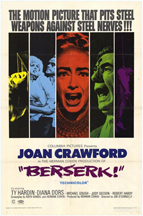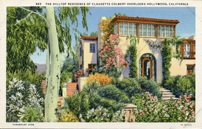THE WHAM WHAT AM!
 If we could save and market what the actor bunch of Hollywood comes into this massage parlor to have slapped off, we’d put Armour out of business. … Well, I’ve got to turn on the radio—loud. Those are my standing orders. Whenever they begin to howl in the back room, cover up with music. I hunt over the dial until I get something with lots of music. … This tenor up in Oregon will do fine. There’s jazz for you!
If we could save and market what the actor bunch of Hollywood comes into this massage parlor to have slapped off, we’d put Armour out of business. … Well, I’ve got to turn on the radio—loud. Those are my standing orders. Whenever they begin to howl in the back room, cover up with music. I hunt over the dial until I get something with lots of music. … This tenor up in Oregon will do fine. There’s jazz for you!




 New York’s
New York’s